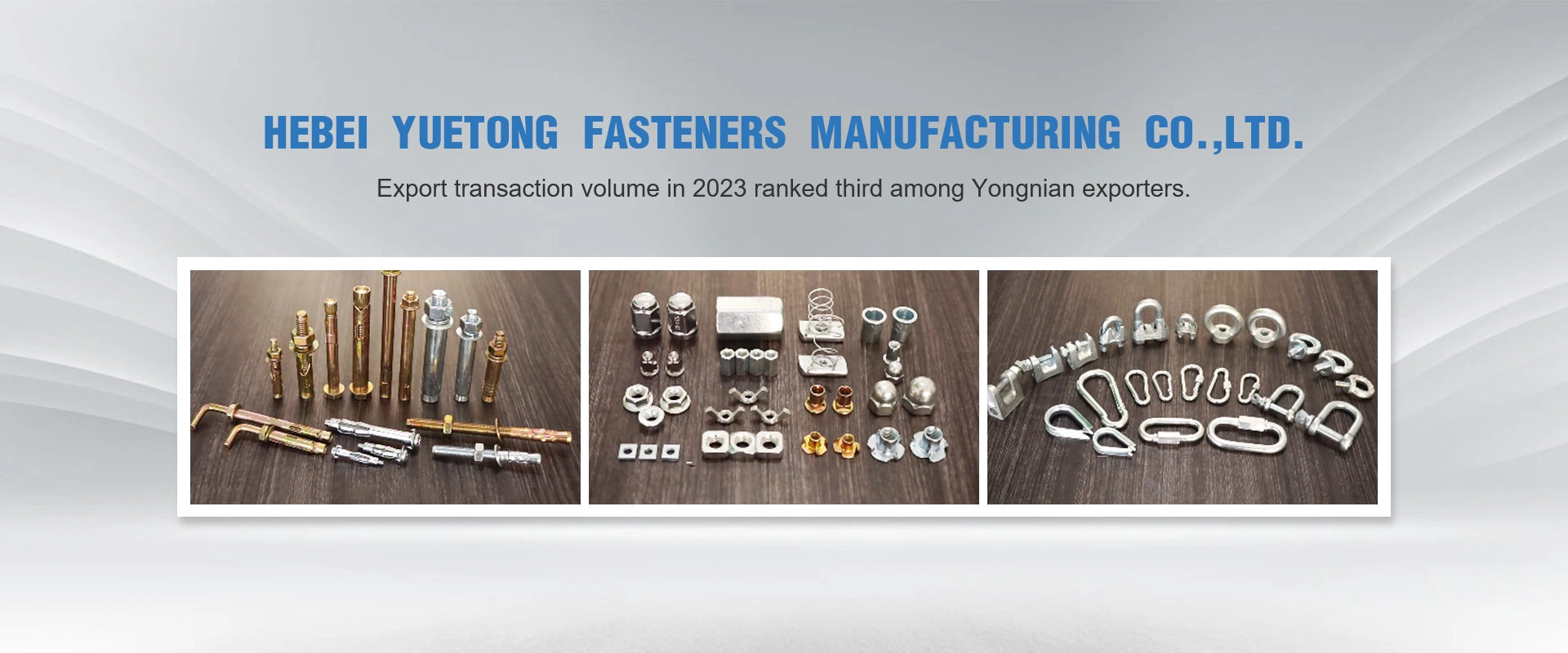Dic . 28, 2024 02:17 Back to list
installing anchor bolts
Installing Anchor Bolts A Comprehensive Guide
Anchor bolts are essential components in construction and structural applications, used to secure structural elements to concrete foundations. Proper installation of anchor bolts ensures the integrity and stability of structures, ranging from buildings to machinery. This article will provide a detailed overview of the installation process, tips, and best practices for installing anchor bolts.
Understanding Anchor Bolts
Anchor bolts are typically embedded in concrete, serving to connect various components. They come in various sizes and configurations, including L-shaped, straight, and J-shaped bolts, made from materials such as steel or stainless steel. Choosing the right type is crucial depending on your specific application, load requirements, and environmental conditions, including exposure to moisture or chemicals.
Tools and Materials Required
Before starting the installation, gather the necessary tools and materials - Anchor bolts (selected according to project requirements) - Concrete mix (if you’re embedding bolts) - Drill with appropriate masonry bits - Level and measuring tape - Wrench or sockets for tightening - Reinforced safety gear, such as gloves and goggles
Installation Steps
1. Planning and Layout Begin by marking the positions where the anchor bolts will be placed based on your design specifications. Use a measuring tape and level to ensure accurate placement. The spacing and alignment of the anchor bolts are crucial for load distribution.
installing anchor bolts

2. Drilling Holes If you're working with a pre-cast concrete slab or foundation, you may need to drill holes for the anchor bolts. Measure the diameter of the bolts and use a drill with a masonry bit that matches this size. When drilling, ensure you go deep enough to accommodate the length of the bolts while allowing for any concrete which may surround them.
3. Placing the Anchor Bolts If you’re using epoxy or other types of adhesives, apply them into the holes before inserting the anchor bolts. If you are simply embedding them, position the bolts in the drilled holes and make sure they are centered. Ensure the bolts are vertical and level.
4. Securing the Bolts If the anchor bolts have nuts, place them on the threaded ends and tighten them with a wrench. Be cautious not to over-tighten; this can weaken the structure or lead to bolt failure.
5. Allowing for Curing If you used concrete mix to embed your anchor bolts, allow adequate curing time according to the manufacturer's instructions. Typically, concrete should cure for at least 24 to 48 hours before applying significant loads.
6. Final Checks After the curing process, check the alignment and tightness of the anchor bolts. Use a level to confirm they have maintained their position. Conduct a visual inspection to ensure there are no visible damages or misalignments.
Best Practices
- Follow Specifications Always adhere to the design specifications provided in engineering drawings. Using the proper size, type, and method of installation is vital for structural integrity. - Consider Environment Evaluate environmental conditions that may affect anchor bolts, selecting materials that resist corrosion if necessary. - Don’t Rush Take your time throughout the installation process. Rushing can lead to mistakes, which can compromise safety. Conclusion
Installing anchor bolts is a fundamental aspect of sturdy construction. A systematic approach to drilling, positioning, and securing these fasteners will enhance the safety and durability of your structures. Whether you're constructing a new building or reinforcing existing structures, understanding the nuances of anchor bolt installation will enable you to achieve professional results. Always consult with a construction specialist or engineer if you're uncertain about any steps to ensure optimal safety and performance.


